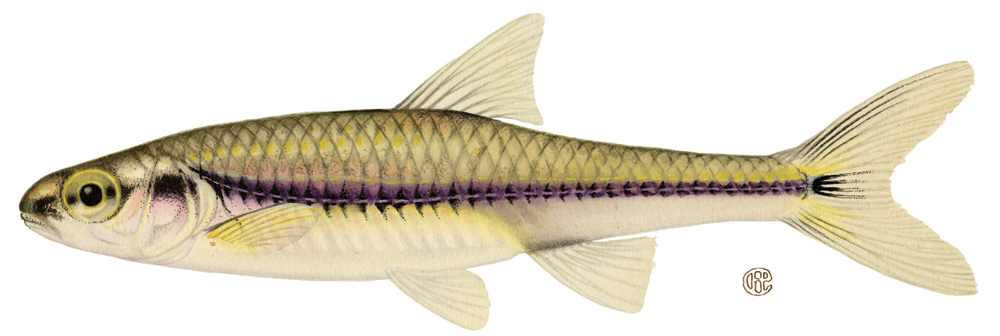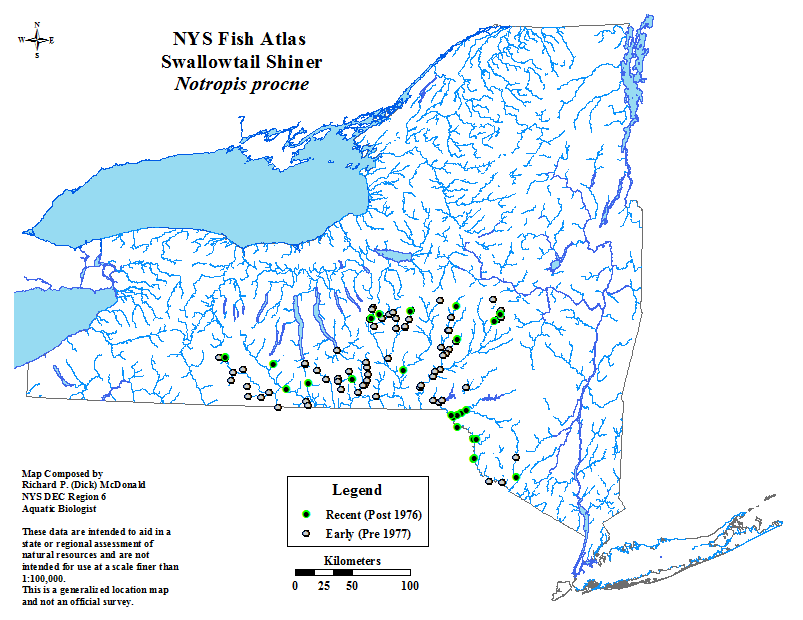
Swallowtail Shiner (Notropis procne)
Two subspecies are recognized. N. p. procne ranges from the Delaware and Susquehanna systems in New York south to the James River in Virginia. It also has been reported from Catharine Creek, the inlet to Seneca Lake, and this has been ascribed to the old Seneca Canal or possibly to a postglacial invasion at the time the Finger Lakes still drained into the Susquehanna. A third possibility is a post glacial stream capture. The other subspecies, N. procne longiceps (Cope), ranges from the Roanoke River in Virginia to the Santee River in South Carolina.
The preferred habitat of the swallowtail shiner is upland streams and small rivers. It is tolerant of sandy bottom and turbid water conditions, but it avoids deeper pools and torrential rapids. It is usually seen in schools near the bottom.
The breeding habits of the swallowtail shiner were studied in the Covington River near Washington, D.C. Spawning took place in a riffle 4 to 12 inches deep over sand and fine gravel when the water temperature was about 78 F. Males and females were about the same size but the males were darker and more active. Males guarded territories, maintaining distances of 4 to 18 inches. Courtship consisted of the male making a series of figure-eight movements over an area of clean gravel that presumably had been swept by the fish's movements. Invading males were chased with a quick rush. Females hovered downstream or at the side until ready to spawn, then moved into the male's territory and stopped within 2 to 4 inches of the male. The male then backed downstream and placed his pectoral fin beneath her head while throwing his caudal peduncle over hers. Together the pair dropped to the bottom and vibrated, stirring up sand as the eggs were laid and fertilized. After spawning, the pair separated gently and the female drifted downstream while the male returned to guarding his territory. Spawning continued after a few minutes and Raney estimated that it would take several days to deposit all of a female's complement of eggs. Yearlings averaged 33 to 39mm and 2- and 3-year-olds were 43 to 52 mm. Few fish live through the third winter.
Distribution of the swallowtail shiner in NY state.
A 99 KB image of the is also available for download.
The above species description was taken out of "The Inland Fishes of New York State" by C. Lavett Smith, published by the New York State Department of Environmental Conservation, 1985.
